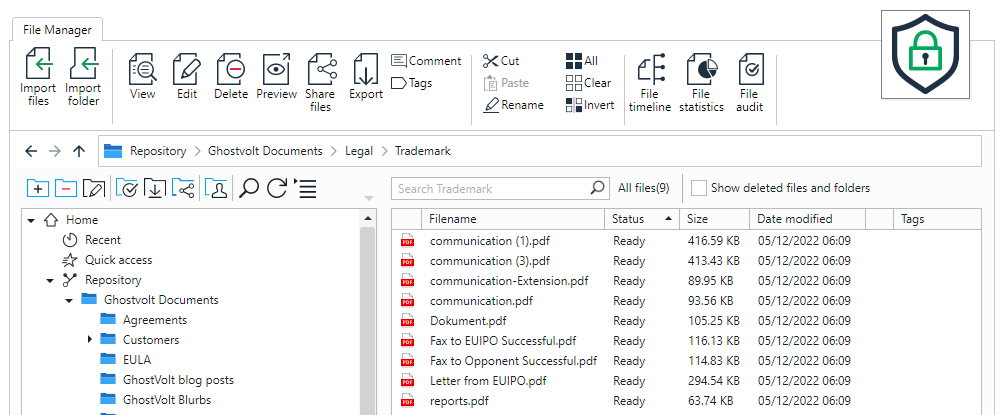Safeguard your Digital Assets – A Look at Zero Trust Security
Zero Trust security, a paradigm challenging traditional network trust assumptions through rigorous authentication, access controls, and continuous monitoring to enhance cybersecurity in today's interconnected digital landscape.

In today’s interconnected and complex online world, the traditional perimeter-based security approach is no longer sufficient to protect digital assets. The increasing number of data breaches and sophisticated cyber threats has necessitated the adoption of innovative security strategies. One such strategy gaining traction is Zero Trust security. This concept challenges the notion of trusting entities within a network and instead focuses on stringent authentication, authorization, and continuous monitoring to ensure the utmost protection. This post will look into the concept of Zero Trust security, its key principles, and how it is becoming a crucial strategy in safeguarding digital assets.
Zero Trust security, as the name suggests, operates on the principle of not inherently trusting any entity, whether internal or external, within a network. This approach assumes that no user, device, or system should be assumed as secure by default. In other words, every individual or element seeking access to resources within a network must undergo rigorous verification and validation processes before being granted access. By adopting this approach, organizations can significantly reduce the risk of unauthorized access, lateral movement within the network, and potential data breaches.
The Evolution of Zero Trust Security
Zero Trust security is not a new concept. In fact, it has been present for over a decade, initially introduced by the industry analyst firm Forrester Research in 2010. However, it has gained considerable attention and adoption over the past few years due to the increasing complexity of cyber threats and the proliferation of cloud-based technologies.
Traditionally, organizations relied on network perimeter defenses such as firewalls and virtual private networks (VPNs) to secure their data. However, the explosion of connected devices, the adoption of cloud services, and the rise of remote working have eroded the boundaries of the traditional network perimeter. Attackers can now easily breach these perimeter defenses and gain access to valuable data. This realization led to the need for a new security paradigm, and Zero Trust security emerged as a viable solution.
Key Principles of Zero Trust Security
- Verifying User Identity: Strong authentication techniques, such as multi-factor authentication (MFA), are implemented to verify the identity of users accessing the network. This ensures that only authorized individuals can gain access to critical resources.
- Device Validation: All devices seeking network access must undergo rigorous validation to confirm their security posture. This includes checking device health, patch level, and adherence to security policies. Only devices that meet the organization’s security requirements are granted access.
- Micro-segmentation: Networks are divided into smaller segments, and access controls are implemented for each segment. This limits the ability of attackers to move laterally within the network, even if they manage to breach one segment.
- Least Privilege Access: Users and devices are granted the least privilege necessary to perform their tasks. This approach minimizes the potential impact of compromised accounts or devices.
- Continuous Monitoring: Zero Trust security entails continuous monitoring of user behavior, network traffic, and system activity. Anomalies are promptly detected, and remedial action is taken to mitigate potential threats.
Benefits of Zero Trust Security
- Enhanced Security Posture: By challenging the inherent trust that traditional security models place on entities within the network, Zero Trust security strengthens an organization’s overall security posture.
- Greater Control: With Zero Trust, organizations have granular control over who and what can access their resources. This control extends to both internal and external entities.
- Reduced Attack Surface: By segmenting the network and implementing access controls, Zero Trust security limits an attacker’s ability to move laterally and gain access to critical assets.
- Improved Compliance: Zero Trust security aligns with regulatory requirements and can help organizations meet compliance standards.
- Flexibility and Scalability: Zero Trust security can be implemented across various environments, including on-premises, cloud, and hybrid environments. It is also scalable, allowing organizations to adapt to evolving business needs.
Adopting Zero Trust Security
- Identify Critical Assets: Determine the most valuable and sensitive assets within the organization, as these will be the primary focus of Zero Trust implementation.
- Develop a Zero Trust Strategy: Craft a comprehensive strategy that aligns the organization’s business goals with the adoption of Zero Trust security. Include stakeholders from all relevant departments to ensure a holistic approach.
- Implement Strong Authentication: Enhance user authentication processes by integrating multi-factor authentication (MFA) and modern identity and access management (IAM) solutions.
- Adopt Micro-segmentation: Divide the network into smaller segments and implement access controls, ensuring that only authorized users and devices can access each segment.
- Continuous Monitoring and Analytics: Deploy advanced monitoring and analytics tools to detect and respond to potential threats in real time. This includes behavior-based anomaly detection and user entity behavior analytics (UEBA) solutions.
- Regular Audits and Updates: Conduct regular audits of access privileges, device health, and security policies to ensure ongoing compliance with Zero Trust principles.
In an interconnected and complex online world, Zero Trust security has emerged as a key strategy for protecting digital assets. By challenging the notion of inherent trust within the network and implementing rigorous authentication, access controls, and continuous monitoring, organizations can significantly reduce the risk of unauthorized access and data breaches. Zero Trust security offers enhanced control, reduced attack surface, and improved compliance, making it a crucial approach for safeguarding digital assets in modern times.
How GhostVolt Can Help
GhostVolt uses zero-knowledge encryption to perform all encryption and decryption in a location where your Cloud provider, such as Google Drive or Microsoft OneDrive, has no access. This ensures that only secure, encrypted files are saved to your cloud folder, preventing any potential data leaks.
With GhostVolt, your files and data are secure and protected with the latest encryption standards. Integrating seamlessly with Microsoft OneDrive and Google Drive, simply add your files to GHostVolt and they'll be encrypted automatically and synced to your cloud account with ease.
Our Ratings





